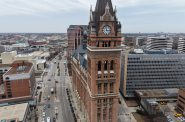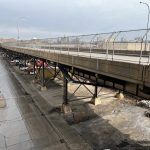State Budget May Impact Your Child’s Classroom
GOP legislators' budget could worsen the growing shortage of teachers.
Pre-pandemic, the state of Wisconsin was already experiencing a severe shortage of educators. Many educators were leaving the profession for retirement or for “greener pastures” in another industry that would provide sufficient wages – and at the same time, significantly fewer Wisconsin college students were pursuing education as a career.
These days, workforce shortages seem to be everywhere. Officials are closing beaches because of lifeguard shortages. The downtown Independence Day fireworks show and the air show were canceled because of parks staff shortages. Service industries cannot find staff to work in their restaurants and bars. Milwaukee-based ManpowerGroup announced this week that large corporations and small businesses are struggling to find professionals in IT, sales, marketing, operations, logistics, the trades, and the list goes on.
The answer to these questions largely depends on your Wisconsin state legislature and what they ultimately decide to do in the next few weeks.
Why? In late May, just before Memorial Day weekend, our state’s Joint Finance Committee voted to freeze spending on per-pupil categorical aid, revenue limits and general aid. They refused to support even a modest inflationary aid increase for our kids’ K-12 schools. Why does that matter?
Our kids’ K-12 schools rely on these funds to provide salary increases and continuing professional development for teachers and staff.
It’s going to be tremendously difficult – if not impossible – for school districts to recruit, retain and develop exceptional classroom teachers in the fall if our legislature does not fix the mistakes made by its Joint Finance Committee. This committee’s vote will force school districts to essentially freeze or cut teacher salaries – worsening the teacher workforce shortage in our schools, and accelerating the exodus of educators out of this profession, forever.
As we come out of the pandemic, without intervention by the legislature, it’s hard to imagine how or why that shortage wouldn’t be worse this fall. The 2020-2021 school year was an incredibly difficult year for most educators. Imagine if, after all of that hardship and struggle, these educators – who we hailed as heroes – were told that they should not expect to receive a wage adjustment to help them and their families keep pace with inflation. For many, it could be the straw that breaks the camel’s back, for good.
Inevitably, someone will wonder aloud why school districts cannot use some of the federal funding they received to provide these salary adjustments. It’s a fair question. But as any accountant or entry level financial literacy course will teach you: you cannot use one-time money to fund long-term initiatives. It’s a recipe for financial disaster.
And of course, none of our schools “won the lottery.” This framing might be the most absurd and cruel characterization of all. Instead, our kids’ schools received emergency aid from the federal government so they could help us all to prevent the spread of a virus that’s killed more than 7,000 of our Wisconsin neighbors, and hospitalized more than 26,000. These crisis dollars were carefully spent – providing students and staff with PPE, laptops, chargers, WiFi, and new systems enabling all staff and students to participate in virtual instruction. New federal funding can be spent on short term expenditures. It’s up to the legislature to get schools back on track and that means ensuring districts have the operating funds to invest in their greatest resources – teachers.
The school year is ending, summer is coming, and “back to school” in the fall feels like it’s light years away. But odd as it may seem, if parents and community leaders do not act right now to prevent the teacher workforce shortage from becoming a crisis, our kids’ classrooms and schools may look very different this August and September. Please, contact your state legislators today. Urge them to provide inflationary funding increases so our kids’ schools can attract and keep exceptional educators in the classroom this fall.
Leigh Anne Fraley, Co-Chair, Legislative Advocacy Committee Wauwatosa School Board and Eric Jessup-Anger, PhD, Co-Chair, Legislative Advocacy Committee Wauwatosa School Board.
Op-Ed
-
Wisconsin Candidates Decry Money in Politics, Plan to Raise Tons of It
 Dec 15th, 2025 by Ruth Conniff
Dec 15th, 2025 by Ruth Conniff
-
Trump Left Contraceptives to Rot; Women Pay the Price
 Dec 8th, 2025 by Dr. Shefaali Sharma
Dec 8th, 2025 by Dr. Shefaali Sharma
-
Why the Common Council’s Amended Budget is Good Policy for Milwaukee
 Nov 20th, 2025 by Alds. Marina Dimitrijevic and Russell W. Stamper, II
Nov 20th, 2025 by Alds. Marina Dimitrijevic and Russell W. Stamper, II



















